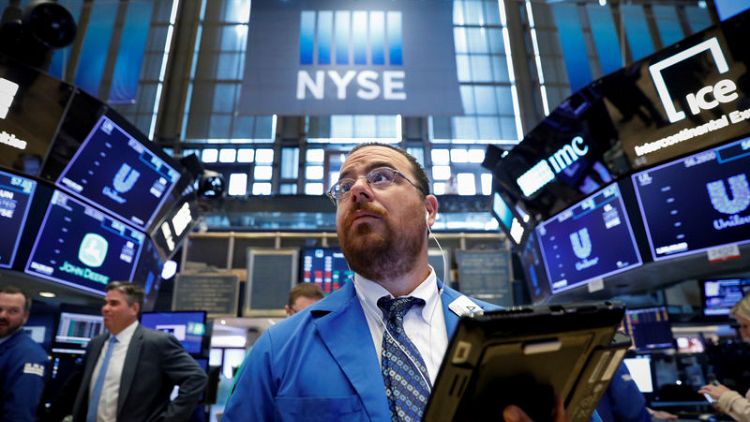By Helen Reid
LONDON (Reuters) - A selloff in big U.S. tech shares wasn't enough to pull money away from the sector, Bank of America Merrill Lynch strategists said on Friday, but U.S. large-cap stocks suffered outflows as investors grew more cautious about an ageing bull market.
Overall investors shed risky assets this week, pulling $2 billion (£1.6 billion) from equity funds and ploughing $2.2 billion into bond funds, the strategists said, citing flows data from EPFR.
Some $0.9 billion coursed into tech stocks, the 14th consecutive week of inflows, despite hefty falls in Facebook and Twitter shares last week causing anxiety about the resilience of the FAANGs (Facebook, Amazon, Apple, Netflix, Google).
U.S. tech has driven the lion's share of the equity market rally so far. Global equities have risen 2.8 percent year-to-date, though BAML strategists calculated that without U.S. tech, they would be 0.8 percent in the red.
Outflows of $1 billion from U.S. large-cap stocks and $2.1 billion from U.S. growth stocks this week testified to concerns these stocks could see their dominance challenged.
Investors started to turn instead to U.S. small-cap and value funds, though inflows were relatively small with $0.1 billion each.
Healthcare, consumer and real estate sectors also enjoyed inflows this week, suggesting investors are turning towards defensive sectors in more volatile markets. Energy and financials funds saw outflows.
European equities suffered their 21st straight week of outflows as a good earnings season failed to lure investors back into the region.
U.S. and Japanese equities also saw outflows of $0.8 billion and $0.9 billion respectively, while emerging market stocks enjoyed their first inflows in 11 weeks as investors ventured back into the bruised asset class.
There was a tentative return to risky credit, too, with $0.2 billion inflows for high-yield bonds. Investment-grade corporate bonds saw their sixth straight week of inflows, making the six-week total $13 billion.
BAML's "Bull & Bear" indicator (where 10 is most bullish) rose to 2.8, reflecting a hesitant improvement in investor sentiment.
"Away from 'extreme bear' as high yield and emerging markets see inflows, global equity market breadth improves," wrote BAML strategists.
This earnings season is driving large share price moves across U.S. and European markets, pushing correlations down and comforting investors who see stocks moving in lock-step, and markets led by just a handful of stocks, as red flags.
AN AGEING BULL
There are just 14 trading days to go until the S&P 500 bull market becomes the longest of all-time, at 3,543 days, the BAML team noted.
But signs of the market fraying at the seams are multiplying.
A slowing pace of economic growth - proxied by global purchasing managers' indices (PMIs) - is driving a decline in earnings per share (EPS), strategists argued, labelling this "peak profits".
Central bank asset buying is also falling sharply, removing one of the key supports for asset prices since the 2007-08 financial crisis. At $1.6 trillion in 2016 and $2,.3 trillion in 2017, they estimate the total will be less than $0.17 trillion this year.
A peak in profits and in accommodative central bank policy point to "tougher" returns in 2018, BAML said, but one silver lining is investors' more cautious positioning, which suggests they are aware of these risks.
(Reporting by Helen Reid, Editing by Mark Heinrich)



